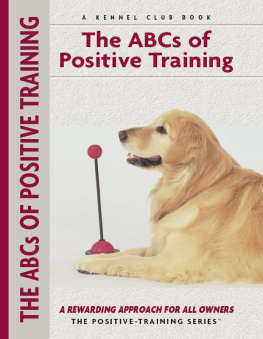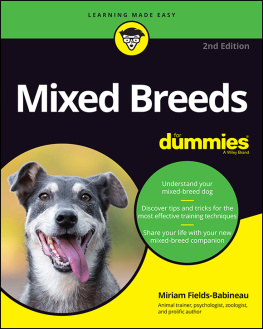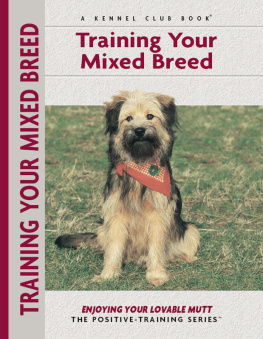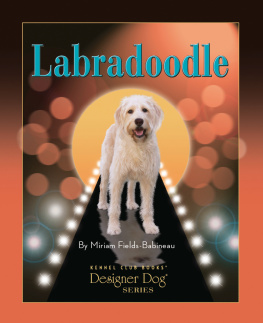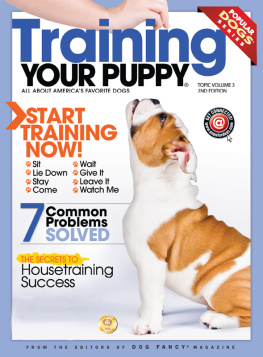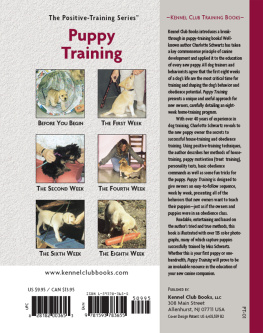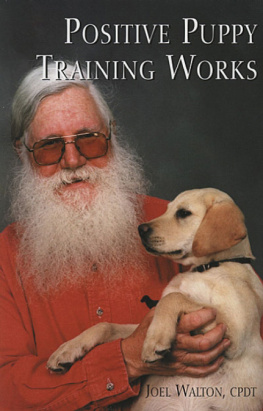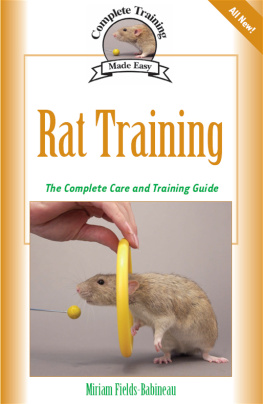Miriam Fields-Babineau has been training dogs and other animals professionally since 1978. She has owned and operated Training Unlimited Animal Training and Animal Actors, Inc., for 25 years. She teaches people how to communicate with and train their dogs, of any age or breed, specializing in behavioral problem-solving.
Ms. Fields-Babineau has authored many animal-related books, including Dog Training with a Head Halter (Barrons Educational Series, Inc.), the e-book How to Become a Professional Dog Trainer (Intellectua.com), Dog Training Basics (Sterling Publishing Co., Inc.) and many more. She writes numerous articles for trade magazines, such as the award-winning Off-Lead Magazine and Practical Horseman. She has produced the videos The First Hello, which addresses how to prepare a dog for an infant, and Dog Training with a Comfort Trainer, which demonstrates how to train a dog using her head-halter design, the Comfort Trainer.
Ms. Fields-Babineau also provides animals for television, film and advertising, having worked with National Geographic, Animal Planet, the History Channel, Warner Films, Orion Films, the Discovery Channel, CBS, the Family Channel and many more. When not training other peoples animal companions, she travels the country, performing in equine and canine competitions as well as exhibiting the skills of her trained felines.
Bernd Brinkmann, Evan Cohen, Miriam Fields-Babineau, Isabelle Franais and Carol Ann Johnson.
KENNEL CLUB BOOKS ABCS OF POSITIVE TRAINING
ISBN: 1-59378-594-1
Copyright 2005 Kennel Club Books An Imprint of I-5 Press A Division of I-5 Publishing, LLC
3 Burroughs, Irvine, CA 92618 USA
Cover Design Patented: US 6,435,559 B2 Printed in South Korea
All rights reserved. No part of this book may be reproduced in any form, by photostat, scanner, microfilm, xerography or any other means, or incorporated into any information retrieval system, electronic or mechanical, without the written permission of the copyright owner.
10 9 8 7 6 5 4 3 2 1


Lets begin by spelling out the terminology commonly used by dog trainers who subscribe to the popular positive-training technique. Positive training is as simple as praising your dog for good behaviorits as simple as telling him Yes, Good dog! and now its as simple as A-B-C!

ACTIVE SUBMISSION
The dog gives up his leadership role by lying down in a submissive position. He can be lying on his stomach, back or side. His tail is wagging slow and low, and he might be licking his lips, blinking his eyes and holding his ears down. The dog tries to make himself look smaller and less threatening.
ALLEY-OOP
A target training tool designed by Gary Wilkes. It has a circular non-tip base, a cylindrical post about a foot long and a round ball on top of the post. It can be placed on most any surface and remain standing upright, making it a great tool for distance targeting.
AVOIDANCE
Trying to keep away from something.

BAITING
Food or a toy used near the dogs muzzle to attain and maintain the dogs attention.
BEHAVIOR
Anything the dog does is a behavior. Examples: Sit, down, come to you, lick his lips, get into the trash can, jump up.
BEHAVIOR CHAIN
A group of behaviors. Examples: Heel and sit, down and stay, sit and stay then come.
BEHAVIOR SHAPING
Building on the knowledge of a known behavior to turn it into a new behavior. Example: The dog knows how to sit and you wish to teach him to stay. Each time the dog remains sitting in the same spot for a few seconds longer, his behavior is being shaped to learn how to stay.
BRIDGE
The point between the dogs responding to a stimulus and receiving his reward.
BRIDGING SIGNAL
Examples: The sound of a click, a squeaky toy or the words Good or Yes in a happy tone of voice, signifying that a reward is coming.

CAPTURING
The moment that the dog has performed a behavior you were seeking, the dog is bridged. This captures the moment that he has done something you wanted him to do. As he has learned that the bridging signal means a reward, hell seek to repeat the behavior and obtain more rewards.
CLASSICAL CONDITIONING
A stimulus that automatically elicits an uncontrollable response. Example: Pavlov conditioned dogs to salivate when they heard a ringing bell by always feeding the dogs upon the sound of the bell.
CLICKER
A small box, either oval or rectangular in shape. The rectangular box has a piece of metal that, when pressed, makes a clicking noise upon release. The oval type of box has a button that presses upon a piece of metal, making a similar clicking noise upon release.
CONDITIONED RESPONSE
A taught response to specific stimuli.
CONSISTENCY
Doing the same thing every time, regardless of the situation.
CRITERIA
The rules and/or conditions you set that must be met prior to a reward.

DISTANCE TARGETING
Setting up something away from you that you wish the dog to go touch.
DISTRACTION
Anything that takes the dogs mind off of you. Examples: Toys, food, people, dogs, other animals, traffic, loud noises.
DOMINANT
In charge. Number one. The boss.

ELECTRONIC COLLAR/ELECTRONIC STIMULATION COLLAR/E-COLLAR
A collar that will elicit an uncomfortable sensation when triggered either by the vibration of the dogs voice box or the use of a remote-control device.
ESCAPE
Trying to avoid a stimulus. Example: A dog that has learned that a certain object can bring either great pain or anxiety will remain away from that object.
EXTINCTION/EXTINGUISH
To get rid of a behavior.

FIXED INTERVAL
A fixed amount of time after which a reward will be given.
FIXED RATIO
A specific amount of correct responses after which a reward will be given.
FORCE-TRAINED
The dogs being pulled or otherwise made to perform without being given a chance to make the correct choice.

HEAD HALTER
A training tool worn on the dogs head, much like a horses halter (not a bridle, for there is no bit). The tool is made to apply pressure to the top of the dogs nose and guide the head. The body follows the head, thereby reducing the dogs pulling power and quickly teaching him to pay attention in a manner that is understood by the dog.

